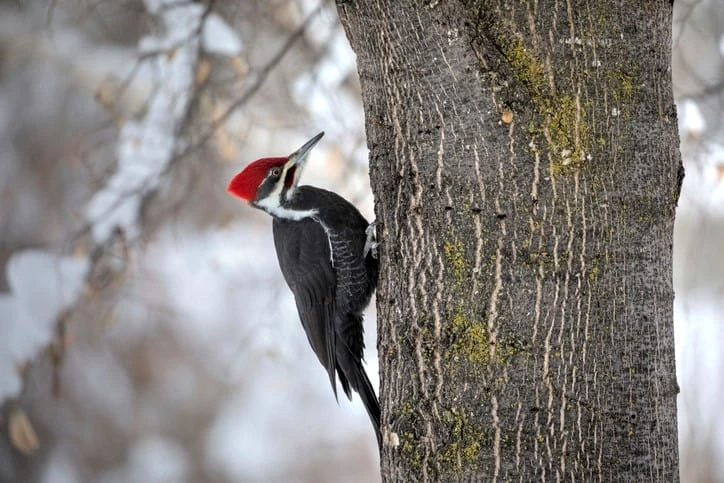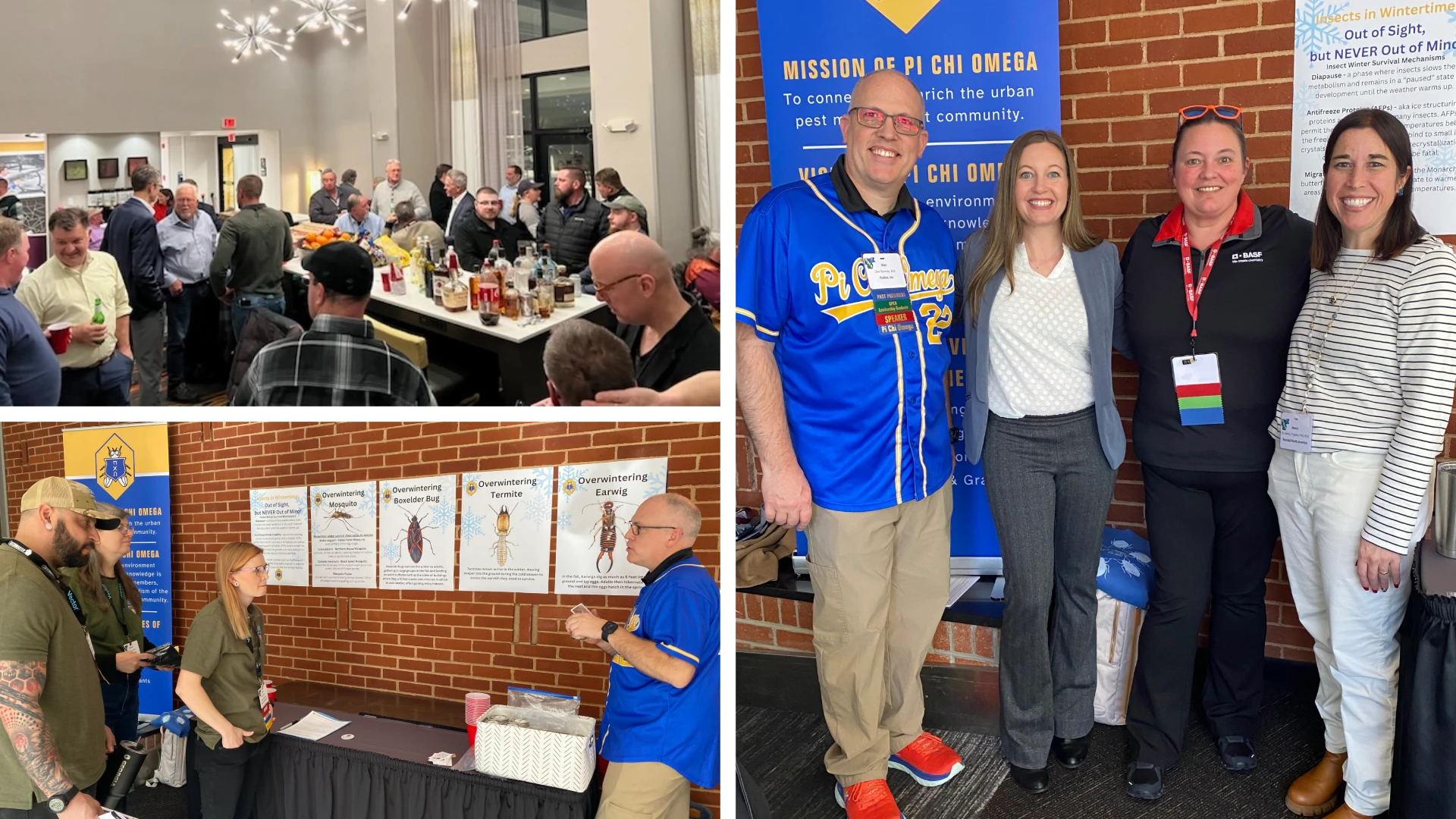
Woodpeckers are fascinating birds to watch — from a distance. When they’re aggressively pecking holes in your customer’s wood home, causing hundreds to thousands of dollars in damage, they’re an aggravating pest.
It all comes down to noise and damage: “People don't want to hear it; people don't want their property damaged,” says Keith Markun, owner of Beast Wildlife Solutions in Minneapolis, Minn., and vice president of the National Wildlife Control Operators Association (NWCOA).
But because woodpeckers are protected under the federal Migratory Birds Convention Act and provincial statutes, it is illegal to harm them, relocate them or destroy their nests without the proper permits, which Markun considers the very last resort in addressing this issue.
WHAT WOODPECKERS ARE THE PROBLEM? The best way to control woodpeckers is to deter them, and this starts by knowing the species you’re dealing with, reminds Markun, who spoke about how to control nuisance woodpeckers at the virtual Purdue Pest Management Conference in January 2021.
Canada has 14 species of woodpeckers. Those most likely to cause problems are pileated, downy and hairy woodpeckers, he says.
- Pileated woodpecker – This woodpecker stands out due to its size at 16 to 19 inches tall. The heads of males and females have bright red crests; their bodies are mostly black with bold white stripes down the neck. They’re found in forested areas, but also where logging was done recently and areas with tall chimneys, says Markun. Egg incubation is about 18 days; young can fly roughly one month after hatching.
- Downy woodpecker – This bird has a small body (between a sparrow and robin in size) with black and white feathers and bold white spots on the wings. The bill is shorter than the length of its head, which is striped black and white; males have a red spot at the nape, or back of the head. They prefer woodlands with deciduous trees, as well as orchards, city parks and backyards. Egg incubation takes about 12 days, and the nesting period about three weeks.
- Hairy woodpecker – This woodpecker looks like the downy woodpecker, but it is slightly larger (robin size) and has a longer bill, about as long as its head. Birds in the east may have more white spots on their wings than birds in the west, which also have narrower white facial stripes. Males have a red nape. They prefer mature forests and open woodlands in parks and suburbs. Egg incubation takes about 12 days; fledging about one month.
Downy and hairy woodpeckers are easily confused. Proper identification is essential should it be necessary to get a Migratory Birds Damage or Danger Permit from Canadian Wildlife Services.
WHY DO WOODPECKERS PECK ON HOUSES? A few reasons: They’re looking for bugs, building cavity nests, marking territories or calling mates.
The birds forage for insects high and low on wood homes, just as they forage on tall dead trees and logs laying on the forest floor. Dead and dying trees generally are dark brown or black in color and “any structures that typically are darker in color to their surroundings mimic dead or dying trees,” points out Markun.
All woodpeckers make cavity nests in the spring in which to lay eggs; non-migratory woodpeckers will peck cavities for shelter in fall when the weather turns cold.
Structures also can sustain damage — and homeowners driven crazy — when woodpeckers drum on wood to warn others out of their territory or to call in mates. Damage caused by drumming looks different than the pecking caused by feeding or nesting, says Markun.
HOW TO DISCOURAGE WOODPECKERS. The goal is to make a structure less desirable to woodpeckers. This often requires identifying the underlying attraction and employing multiple tactics:
- Get rid of the food source – Homes with a wood-related insect problem such as carpenter ants, carpenter bees, termites and wood-boring beetles are more likely to attract woodpeckers. As such, take the necessary steps to identify and treat for that pest. Markun usually contracts with a licensed pest management professional to do this work.
- Repair and protect wood – Depending on the severity of the damage, wood will need to be replaced and holes and gaps filled and covered. This may involve a simple repair or be something much more complex, involving specialty materials, considerable heights and an in-depth knowledge of construction and local building codes. “Knowing your components and building materials on the structure is going to help you greatly,” says Markun. PMPs with handyman and exclusion services may choose to take this work on themselves; others may find it best to work with a local builder. Markun likes to repair holes and cover suspectable areas of wood with metal sheeting to prevent further damage from woodpeckers, but this doesn’t keep them from drumming on the metal to establish territory or during mating unless deterrents also are employed.
Use deterrents – Various devices can be used to harass or scare woodpeckers away from structures. Visual deterrents include shiny mylar mobiles that use motion and bright flashing to scare away woodpeckers. They’re most effective when secured high up — birds fear attack from above — and strategically so their flashing reaches all corners on that side of the house. More than one device may be needed. It’s also important to consider shade and the movement of the sun when placing these devices, says Markun. Other deterrents include scary eye balloons that look like owl eyes; predatory bird silhouette mobiles that move in the wind; and optical bird gel discs that use sight, sense and smell to repel woodpeckers. Effigies of owls, hawks and snakes work best when they are repositioned regularly. Scare or attack spiders, which are sound- and motion-activated, drop down when woodpeckers begin pecking. These are effective for smaller areas that don’t get the sun needed to optimize mylar mobile deterrents, but not for large spans; they also require maintenance, says Markun.
Audio deterrents featuring distress or predator bird calls get mixed results in residential settings. “Most clients do not want to hear that noise either,” says Markun. Netting can collect debris and become damaged, is not always visually pleasing and ineffective if attached too closely to the structure, allowing woodpeckers to still reach the wood.
In spring, when eggs or fledglings are present in nest cavities, such deterrents are unlikely to work on adult woodpeckers, so it’s best to wait until nests are empty. “You can put up all the deterrents up you want. If there are eggs and fledglings inside there, they're not going to leave,” says Markun.
ADDITIONAL TIPS FOR SUCCESS. A thorough site assessment encompassing the entire exterior of the house is key, says Markun. He suggests using a boroscope to determine if any nest cavities contain eggs or fledglings, or if other animals like squirrels, bats or hornets have taken possession of empty cavities. Photographs will help the client understand the scope of the problem and issues that need to be addressed.
When accessing roofs and peaks, safety is a top priority and requires the use of proper gear and equipment. This can increase the cost of a woodpecker control job, reminds Markun.
Asking the right questions provides valuable insight that will help you bid the job accurately. For how long has the client heard drumming? In what areas? What deterrent tactics has the homeowner tried herself? If the bird has only been active for a week, the job should be less complex than if it has been an issue for months and months.
He usually proposes a comprehensive three-month-long program that provides a warranty and involves a specific number of service visits and activities targeted to a specific side of the structure. In addition, Markun may propose preventive activities for other sides of the house.
If fledglings have not yet bolted from nests, he explains why the program must wait. It helps to have communicated this possibility when the customer initially called or emailed and before a technician shows up for the site inspection.
Putting everything in writing helps set client expectations, reminds Markun, who encourages PMPs to develop their skills by attending NWCOA bird courses.
The author is a frequent contributor to PCT.
Latest from Pest Control Technology
- Hogarth's Pest Control Using Meta AI Glasses for Pest Identification, In-Field Photography
- OcuTrap Uses Remote Monitoring Technology to Improve Capture Rates
- Skedaddle Wildlife Opens Columbus (OH) Franchise Location
- UCCE Orange County Partners with Newport Exterminating to Resolve Mouse Infestation
- Arab Termite & Pest Control Celebrates 50 Years in Business
- Rentokil Initial Reported 2024 Performance Met Market Expectations; Announced North America Leadership Change
- Truly Nolen Promotes Brainard to Marketing Manager
- WSDA Confirms First Bird Flu Case in 2025





